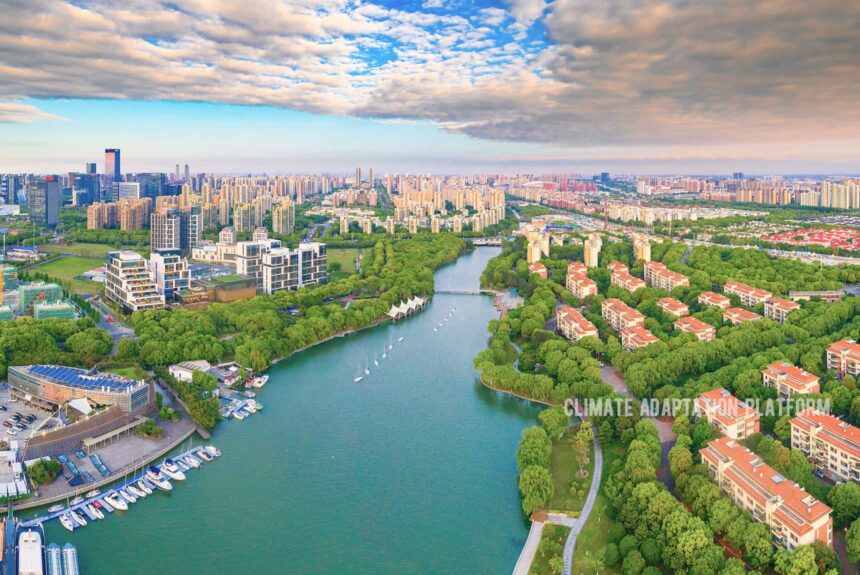Various weather extremes are affecting different regions and cities across the world. Severe flooding devastated cities in Germany, China, New York, India, Canada, and South Africa, while historic droughts ravaged the Horn of Africa, Iraq, and the western U.S.
Humans have responded to extreme events using engineered infrastructure for decades – bigger dams, higher levees, and longer aqueducts.
At the same time, with population and economic growth and the need for commercial agriculture, humans began to control water movement through infrastructure. In the face of climate change, have these structures successfully controlled the flow of water or has it exacerbated the problem?
The article “Slow water: can we tame urban floods by going with the flow?” discussed how cities and communities can better manage water in climate change and rapid urbanisation.
It is an edited extract from the book Water Always Wins: Thriving in an Age of Drought and Deluge by Erica Gies, published by Head of Zeus.
The article says that a new band of “water detectives” – restoration ecologists, hydrogeologists, biologists, anthropologists, urban planners, landscape architects and engineers, wanted to understand what water wants, how it interacts with the environment – soils, ecosystems, rocks before we tried to control it with engineered infrastructures. This new knowledge will help us find creative ways to deal with today’s flooding problems.
These new detectives are learning that a more efficient way to manage water is to mimic nature, to restore its natural function instead of building more concrete infrastructure. These approaches include nature-based systems, green infrastructure, low-impact development, and water-sensitive urban design.
The article cites China’s sponge cities initiative as an excellent example of managing floods and absorbing rainfall. It also offers other benefits like encouraging ecosystems to thrive and providing recreational spaces for urban residents.
When we create spaces for water, the water slows and stalls on land, bringing many benefits and adding to greater resilience. The author calls this innovative approach to manage water the “Slow Water” movement. When water moves slowly and lingers, good things come out of it – slow water provides habitat and food for many life forms above and beyond. This practice is also akin to many indigenous traditions as well. Indigenous people don’t consider water as a “what” or commodity or threat but as a “who” – it is alive, and therefore we should protect and respect water rather than control it.
The article says that the “Slow Water” approach is contrary to how we manage water today, primarily when we transport water from its source to provide water to another area or withdraw water from one basin to the next through water engineering.
According to the article, bringing water from elsewhere can harm people and the water source. First, it can deplete water from the donor ecosystem (depriving people of their water source) and introduce invasive species to the receiver. Second, it creates a false sense of security in the receiving community as they don’t know the water supply limits, so they are prone to wasting it.
Urban sprawl in water-scarce areas like the U.S. southwest, southern California, and the Middle East can make them vulnerable to water supply drops.
China’s sponge cities.
The July 2012 flood in Beijing, China, caused by an intense storm killing 79 people and costing nearly $2 billion in damage, triggered China’s widespread implementation of the sponge city design.
Yu Kongjian, founder of Turenscape – an acclaimed landscape architecture firm, is the brains behind China’s “sponge cities” design and a leading figure in the Slow Water movement.
Years before the flood, Yu warned the government of the country’s impending disasters.
He had mapped the city landscape, which he calls the city’s “ecological security pattern”. He learned that parcels of land are at high risk of flooding and urged the government to stop the developments and instead let the area absorb the water. The government at that time ignored his recommendations.
The Beijing tragedy taught the city that ignoring the water’s natural movement in the landscape can become a matter of life and death.
John Hopkins University researchers calculated that for every 1% increase in impervious surfaces in cities, runoff boost waterway flooding by 3.3%. Sponge cities counter this trend by seeking places throughout the urban areas where water can seep into the ground.
Now Yu leads the way in re-engineering China’s old cities and designing new ones to “accept rather than fight natural water flows”. His projects incorporate the Slow Water principles to reduce floods and water pollution and conserve water for dry days.
The article notes that in 2015, the government began demonstration projects in 16 cities and added 14 more in 2016. Each project covers at least 13 square kilometres. Its goal is to retain 70% of annual rainfall by 2020.
The article highlights that humans’ radical transformation of natural landscapes and waterways for decades also worsens today’s flooding and water scarcity problems.
“The key to greater resilience, say the water detectives, is to find ways to let water be water, to reclaim space for it to interact with the land. Innovative water management projects aim to slow water on land in some approximation of natural patterns”.
As the article highlights, we need to protect and work with our natural environment and not fight it so it won’t fight us back.
Read more about the Slow water approach to managing floods and conserving water resources by clicking the link in the “Source” below.
Source:
Gies, E. (2022 June 7). Slow water: can we tame urban floods by going with the flow? The Guardian. Retrieved from https://www.theguardian.com/environment/2022/jun/07/slow-water-urban-floods-drought-china-sponge-cities



Leave a Reply